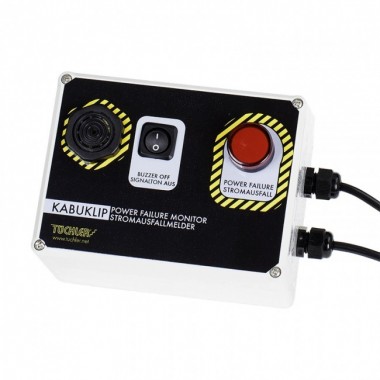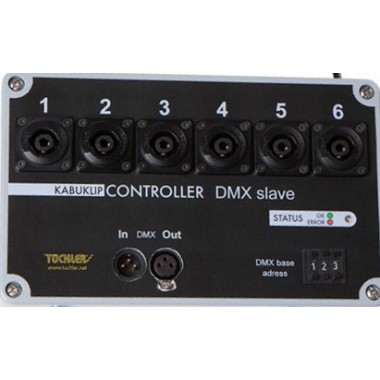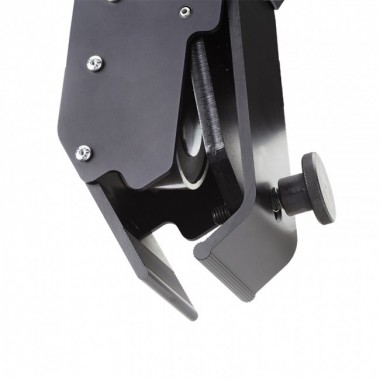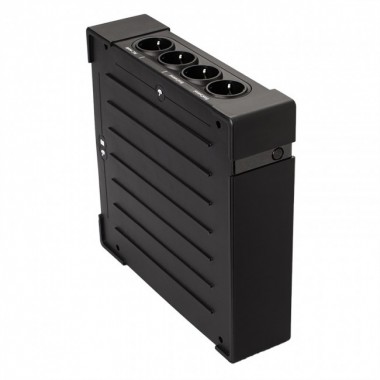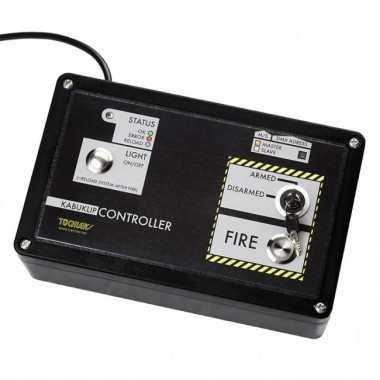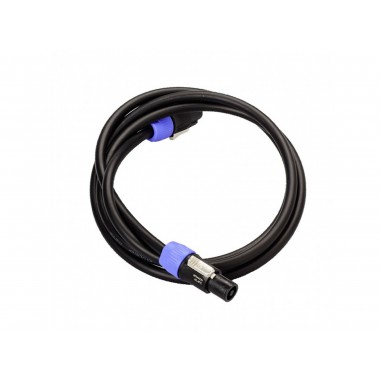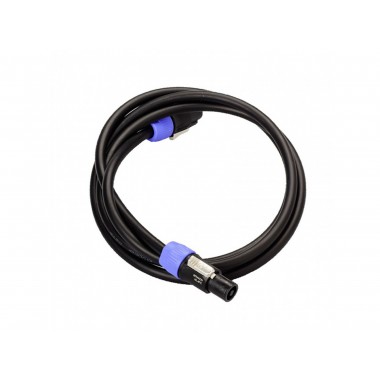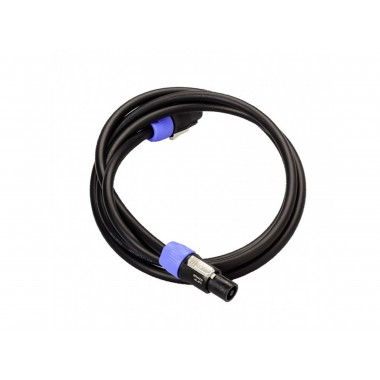Kabuklip
At PS Stage, we're not only passionate about stage technology, but we're also deeply committed to delivering innovative solutions that elevate the quality of any event. In this category, you'll fin...d kabuki systems. This system, while perhaps not as well-known to everyone, is a true magic trick in stagecraft, allowing for dramatic and surprising scene changes that can completely transform the atmosphere of a performance.
Read more
What is a Kabuki System?
Kabuki is a curtain-dropping system that is primarily used in theater, although it has also become popular at other live events, such as concerts, product launches, and corporate shows. Its main function is the rapid release of a curtain or screen, which falls to the ground in a spectacular way, revealing a new scene, a product or any other key element of the show.
This system, which takes its name from the traditional Japanese Kabuki theater, where similar mechanisms were used for quick and dramatic scene changes, has been modernized to adapt to the needs of current stage technology. At PS Stage, we have worked with a variety of these systems, and have learned to value both their simplicity and their ability to surprise and capture the attention of the audience.
How does a theater curtain work?
Before we dive into how the Kabuki system works, it is important to understand how a traditional theater curtain operates. Curtains in a theater are not simply pieces of fabric; They are carefully designed elements that must be operated with precision to fulfill their function. There are several types of curtains in the theater, such as the main curtain, which opens and closes to mark the beginning and end of a play, and backdrops, which are used to change the scenery behind the actors.
The main curtain is usually operated manually or using a pulley system. In a manual system, ropes and pulleys are used to raise and lower the curtain, controlling its speed and timing with the action on the stage. In more advanced systems, such as those we use at PS Stage, the curtain can be automatically controlled using motors and DMX control systems, allowing for greater precision and synchronization with lighting and sound.
How does an automatic curtain raising system work?
Automatic curtain raising systems, such as those used in the Kabuki system, take stage control to a new level. Instead of relying on manual force or a theater operator to move the curtain, these systems use electric motors that are electronically controlled. At PS Stage, we work with some of the most advanced systems on the market, allowing complete control over the speed, timing and way the curtain moves.
A typical automatic curtain raising system works by a motor that winds and unwinds a rope or cable, which in turn is connected to the curtain. This motor is controlled by a control system, which can be as simple as an on-off switch, or as complex as a DMX control system that allows precise movements to be programmed and synchronized with other elements of the show.
When this type of system is combined with a Kabuki system, an even more impressive effect is achieved. The Kabuki system uses quick release mechanisms, which release the curtain instantly, allowing it to fall to the floor dramatically. This can be used to create surprises on stage, suddenly revealing a new scene or an object behind the curtain.
Benefits of having a Kabuki on your stage
If you have ever witnessed the dramatic fall of a curtain at an event, you will know how shocking this moment can be. The Kabuki system not only adds an element of surprise and dynamism to your performance, but it also has a number of practical benefits that make it an invaluable tool in stage production.
- Visual impact: The main reason for using a Kabuki system is the visual impact it generates. The ability to make a curtain disappear in an instant and reveal something new is a powerful tool to capture the audience's attention and keep them in suspense.
- Versatility: The Kabuki system can be used in a variety of settings, from traditional theaters to rock concerts, product presentations, and corporate events. Its versatility makes it ideal for any situation in which you want to create a dramatic change of scene.
- Ease of use: Despite their impact, Kabuki systems are relatively easy to use. Once installed, they can be operated using a remote control, allowing them to be activated from anywhere in the theater or event room.
- Synchronization with other elements: Thanks to its integration with DMX control systems, the Kabuki system can be perfectly synchronized with lighting, sound, and other special effects. This allows us to create truly memorable moments, where all the elements of the show work in harmony.
- Safety: At PS Stage, safety is always a priority. The Kabuki systems we offer are designed with multiple safety mechanisms to ensure that the curtain is released in a controlled and safe manner, avoiding any risk to the equipment or artists on stage.
Kabuki, Kabuklip and Automatic Curtain Systems: What is the difference?
In the world of stage technology, it's easy to get confused with terminology. We often hear terms like "Kabuki," "Kabuklip," and "automatic curtain systems" used interchangeably, but each has its own specific characteristics and uses.
- Kabuki: As we have mentioned, Kabuki is a curtain dropping system that allows the quick release of a curtain to reveal something behind it. It is ideal for dramatic effects and surprising scene changes.
- Kabuklip: This is a specific component of the Kabuki system, a clip or mechanism used to hold the curtain before its release. Kabuklips are essential in ensuring that the curtain stays in place until the exact moment you want it to fall.
- Automatic Curtain Systems: These are more general systems used to control the movement of curtains in a theater or stage. They may include motors, pulleys, and electronic control systems that allow curtains to be raised and lowered automatically. While Kabuki is a specific technique for dropping curtains, an automatic curtain system can be used for a variety of curtain movements and effects.
At PS Stage, we not only sell these systems, but we also offer advice and technical support to help you choose the right system for your event or theater production.
Implementation of Kabuki Systems in different scenarios
One of the great advantages of the Kabuki system is its adaptability to different types of events and scenarios. Whether you are organizing a traditional theater show, a live concert, or a product presentation, Kabuki can be implemented in a variety of ways to maximize its impact.
- Traditional Theatre: In theatre, Kabuki is commonly used for dramatic scene changes. Imagine a climactic scene in a play, where the main curtain suddenly falls, revealing a new stage behind it. This type of effect not only surprises the audience, but also enhances the visual narrative of the work.
- Concerts and Festivals: At live music events, Kabuki can be used to create moments of surprise and emotion. For example, during the opening of a concert, the curtain may fall to the floor at the exact moment the band begins to play, revealing the musicians on stage in spectacular fashion.
- Product Presentations: In product launches, Kabuki is a powerful tool to reveal a new product to the public. A curtain can hide the product during the early stages of the presentation, and then fall dramatically to show it to the audience in its splendor.
- Corporate Events: At conferences and other corporate events, Kabuki can be used to transition between sections of the event or to reveal a new brand or company message. The visual impact of Kabuki can be a powerful ally to communicate key messages in a memorable way.
The importance of maintenance and correct installation
As experts in stage technology, at PS Stage we understand that proper installation and maintenance of a Kabuki system is essential to its safe and effective operation. It is essential to ensure that all components are correctly installed and that the system is checked regularly to avoid failures during use.
We offer professional installation services and advice to ensure your Kabuki system works perfectly the first time. In addition, our technical support team is always available to resolve any questions or problems that may arise.
If you are interested in equipment for events and concerts you may also be interested in visiting our anchor points section, professional pulleys or our hoists

